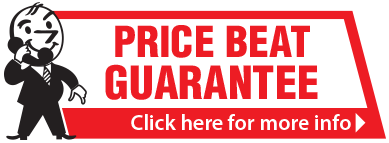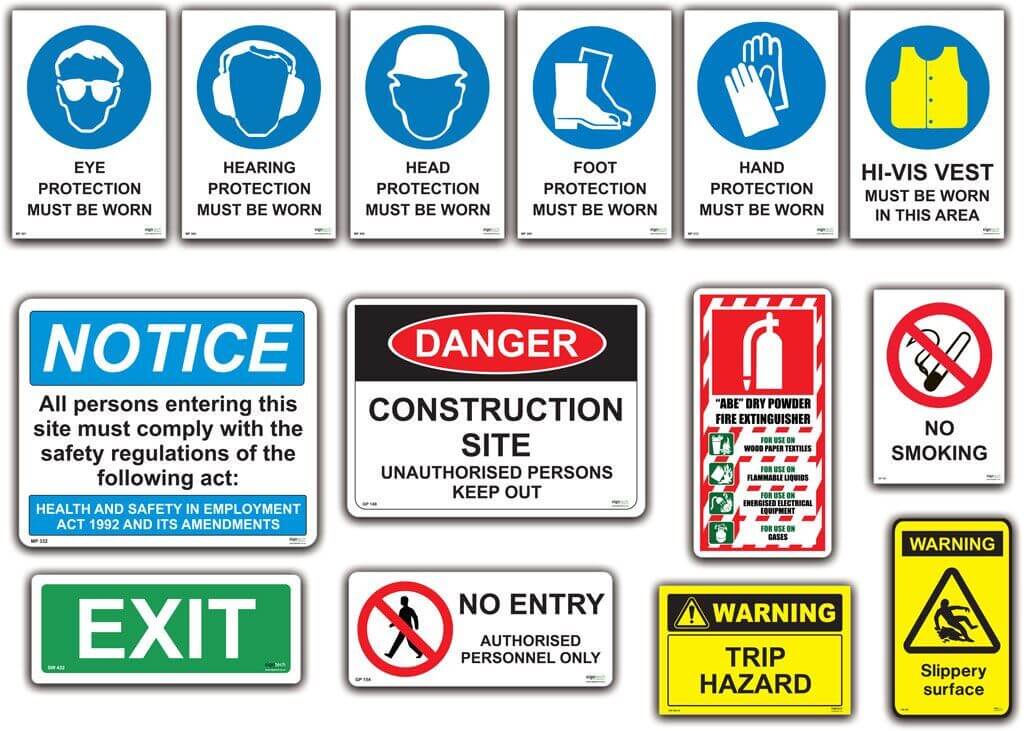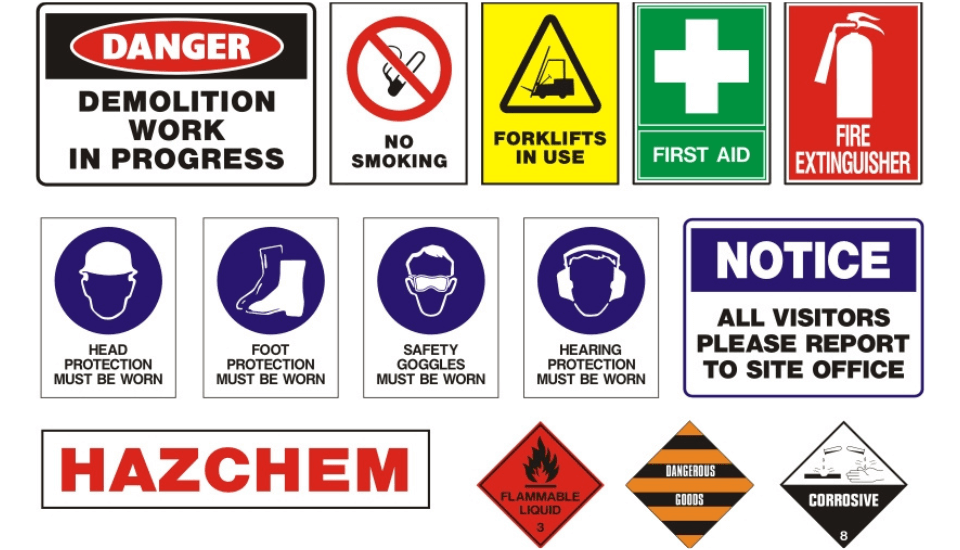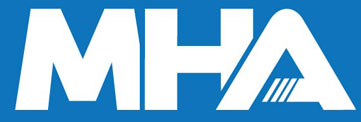What Happens If Your Safety Signage Isn’t Compliant?
Date Posted:15 August 2025
Safety signage compliance is more than a legal requirement—it’s a lifeline in emergencies. Discover the real risks of non-compliance and how you can protect your workplace today.
Verdex Insights: At a Glance
-
The Challenge: Many workplaces overlook or misuse safety signage, leaving critical areas under-communicated and non-compliant. Poor or missing signs can cause confusion, increase accident risk, and expose businesses to WHS penalties or insurance issues.
-
The Insight: Compliant signage under AS 1319:1994 ensures hazards, exits, and mandatory actions are communicated clearly. Using correct colours, symbols, and placement helps prevent injuries, maintain order, and support legal compliance across all worksites.
-
The Verdex Solution: Verdex supplies WHS-compliant workplace safety signage and information systems for warehousing, construction, manufacturing, and logistics sectors. Our durable, regulation-ready signs help businesses meet compliance, prevent incidents, and reinforce strong safety culture across every site.
Why Safety Signage Compliance Matters
Safety signage in the workplace isn't just for decoration, it’s a life-saving communication tool. From guiding emergency exits to warning about hazardous machinery, signs deliver critical information at the exact moment it's needed.
Compliance with signage standards helps prevent workplace injuries, confusion, and panic. It ensures that all staff, contractors, and visitors are aware of risks and understand the correct actions to take in specific zones.
When signs are missing, incorrect, or unclear, the likelihood of accidents increases and so does the liability. Non-compliance with national standards doesn’t just put people in danger; it puts your business operations, reputation, and legal standing at risk.
Proper workplace signage and information forms the foundation of a strong workplace safety culture and shows your commitment to WHS obligations under Australian law.
What Is Considered ‘Compliant’ Safety Signage in Australia?
In Australia, compliant safety signage must adhere to AS 1319:1994—the standard that outlines the design, use, and placement of safety signs in occupational environments.
Key compliance features include:
-
Correct colours: Red for danger, yellow for warning, blue for mandatory actions, green for emergency information
-
Appropriate symbols: Pictograms must be universally understood
-
Visibility: Signs must be easy to read from a safe distance, with sufficient lighting or contrast
-
Durability: Materials must withstand conditions such as UV, moisture, or impact
-
Placement: Signs must be located where the risk exists and not be obstructed or hidden
Homemade or off-brand signs often fail to meet these criteria, leaving businesses vulnerable to WHS breaches and diminished safety communication.
At Verdex, we have a wide selection of compliant signage to keep your workplaces in-line with WHS regulations. For additional precautions, make sure to supply your staff with relevant PPE clothing and safety gear, as well as reliable first aid equipment to assist all types of accidents that may occur in the workplace.
Consequences of Not Having Compliant Signage
Legal Penalties & WHS Breaches
Failing to comply with signage requirements can result in serious legal consequences under Work Health and Safety (WHS) laws. Regulators such as Safe Work Australia or state authorities may issue fines, penalties, or improvement notices.
Repeat or serious breaches (especially those that result in injury) can lead to:
-
Hefty fines exceeding $100,000 for businesses
-
Prosecution of responsible officers or directors
-
Stop-work orders or site shutdowns
In addition, non-compliant signage can invalidate insurance claims, particularly if the lack of correct warning signs contributed to an incident. It’s a risk that no business can afford.
Increased Risk of Workplace Incidents
Incorrect, missing, or poorly placed signage increases the risk of injury—especially in high-risk industries like warehousing, logistics, construction, and manufacturing.
Examples include:
-
A worker entering a confined space without knowing due to the absence of a “Danger” sign
-
Staff failing to wear PPE where required because there’s no “Mandatory PPE” sign
-
Unmarked slip hazards or vehicle zones causing preventable injuries
Signage is a form of visual communication. When that communication fails, it exposes everyone on-site to harm.
Operational Downtime
Non-compliance can also cause costly operational delays. An incident resulting from unclear signage may lead to:
-
Regulatory investigations
-
Temporary shutdowns
-
Time-consuming WHS audits or reviews
-
The need to remove and replace incorrect signage across the site
Even minor signage breaches found during an audit can lead to project delays, contract disputes, or mandatory rectification works. Investing in correct signage from the outset saves time and prevents expensive rework.
Reputational Damage
Workplace safety performance directly impacts your business reputation. News of WHS breaches or preventable injuries, especially those linked to signage failure, can quickly spread.
Consequences include:
-
Losing client trust and credibility
-
Reduced competitiveness when bidding for contracts (especially in construction or government sectors)
-
Difficulty attracting and retaining staff, as poor safety culture affects morale
Safety signage is a small detail that carries a big message: We value safety. Failing to meet signage obligations undermines that message.
Common Areas Where Signage Non-Compliance Occurs
While many businesses make an effort to install safety signs, compliance gaps are still common. These include:
-
Missing signs for fire exits, first aid stations, or hazardous zones
-
Incorrect colours used on homemade signs (e.g., using yellow for mandatory actions)
-
Faded, damaged, or peeling signs that are no longer legible
-
Lack of multilingual signage or pictograms in culturally diverse workplaces
-
Temporary printed signs used in place of proper, compliant signage
These issues can quickly escalate during an audit or emergency event. Regular reviews help ensure that signage remains effective and compliant.
How to Check If Your Workplace Is Compliant
To stay on top of safety signage compliance, follow this checklist:
-
Conduct a signage audit with a WHS officer or safety consultant
-
Compare all signage to AS 1319:1994—pay attention to colour, shape, and messaging
-
Confirm placement: Signs should be at eye level, unobstructed, and where the risk occurs
-
Replace faded, broken, or non-compliant signs immediately
-
Use high-visibility materials (aluminium, corflute, polypropylene, or adhesive backing) suited to indoor or outdoor use
At Verdex, we offer signage audits and tailored safety solutions that ensure your workplace is compliant and ready for inspection. For added protection between staff and hazardous areas, implementing safety barriers and security bollards can help reduce risk.
If you require any assistance, get in touch with the team at Verdex by:
-
Emailing sales@verdex.com.au
-
Filling out our contact form
Frequently Asked Questions
What is AS 1319:1994?
AS 1319:1994 is the Australian Standard for occupational safety signage. It defines how signs should be designed, coloured, and positioned to effectively communicate hazards and instructions in the workplace.
Can I create my own signs with a printer or label maker?
No. DIY signage rarely meets the design, material, or visibility standards set by AS 1319:1994. It’s best to use professionally produced signage that’s durable, legible, and compliant.
How often should signage be checked or replaced?
We recommend a signage audit every 6–12 months. You should also check signs after workplace changes, renovations, or incidents. Replace any that are damaged, faded, or no longer relevant.
Do all signs need to be in colour?
Yes. Colours are a critical part of safety communication. Red, yellow, blue, and green each have specific meanings under AS 1319:1994 and help workers quickly identify the nature of the message.
































































































































 Trolleys & Hand Trucks
Trolleys & Hand Trucks Cage Trolleys
Cage Trolleys Cleaning Carts & Trolleys
Cleaning Carts & Trolleys Construction Trolleys
Construction Trolleys Custom Trolleys
Custom Trolleys Hand Trucks & Dollies
Hand Trucks & Dollies Laundry/Linen Trolleys
Laundry/Linen Trolleys Lifting Trolleys
Lifting Trolleys Order Picking Trolleys
Order Picking Trolleys Panel Cart Trolleys
Panel Cart Trolleys Platform Trolleys
Platform Trolleys Powered Trolleys
Powered Trolleys Shelf & Tiered Trolleys
Shelf & Tiered Trolleys Shopping Trolleys
Shopping Trolleys Stainless Steel Trolleys
Stainless Steel Trolleys Tool Trolleys
Tool Trolleys Utility & Service Carts
Utility & Service Carts Lifting & Handling Equipment
Lifting & Handling Equipment Forklift Attachments
Forklift Attachments Jib Attachments
Jib Attachments Lifting Hoists & Pallet Hooks
Lifting Hoists & Pallet Hooks Load Skates & Tow Tugs
Load Skates & Tow Tugs Manual Stackers & Lifters
Manual Stackers & Lifters Pallet Jacks
Pallet Jacks Pallet Lifters
Pallet Lifters Pallet Rotators & Dispenser
Pallet Rotators & Dispenser Powered Pallet Trucks & Electric Lifters
Powered Pallet Trucks & Electric Lifters Scissor Lift Trolleys and Tables
Scissor Lift Trolleys and Tables Conveyor Equipment
Conveyor Equipment Conveyor Frames & Stands
Conveyor Frames & Stands Roller & Skate Conveyors
Roller & Skate Conveyors Ladders & Access Equipment
Ladders & Access Equipment Container & Yard Ramps
Container & Yard Ramps Ladders & Step Stools
Ladders & Step Stools Work Platforms & Crane Cages
Work Platforms & Crane Cages Drum Handling Equipment
Drum Handling Equipment Drum Storage & Bunding
Drum Storage & Bunding Drum Trolleys & Lifters
Drum Trolleys & Lifters Forklift Drum Handling
Forklift Drum Handling Waste Handling & Bins
Waste Handling & Bins Bin Lifters & Tippers
Bin Lifters & Tippers Plastic Waste & Wheelie Bins
Plastic Waste & Wheelie Bins Steel Waste & Tipping Bins
Steel Waste & Tipping Bins Waste Carts
Waste Carts Dangerous Goods Storage & Spillage
Dangerous Goods Storage & Spillage Aerosol Cans Storage Cages
Aerosol Cans Storage Cages Bunded Pallets & Storage
Bunded Pallets & Storage Corrosive Goods Storage Cabinets
Corrosive Goods Storage Cabinets DG Storage & Trolleys
DG Storage & Trolleys Flammable Liquid Cabinets
Flammable Liquid Cabinets Forklift Gas Storage Cages
Forklift Gas Storage Cages Site Storage
Site Storage Spill Kits
Spill Kits Shelving & Storage Equipment
Shelving & Storage Equipment Stillage & Transport Cages
Stillage & Transport Cages 750 Series Cage Configurations
750 Series Cage Configurations Heavy Duty Cabinets
Heavy Duty Cabinets Heavy Duty Shelving
Heavy Duty Shelving Mega Bins & Pallets
Mega Bins & Pallets Packing & Workbenches
Packing & Workbenches Parts Trays & Stor-Pak Bins
Parts Trays & Stor-Pak Bins Pegboard & Louvre Panels
Pegboard & Louvre Panels Plastic Bins & Crates
Plastic Bins & Crates Plastic Handling Solutions Bins
Plastic Handling Solutions Bins Plastic Pallets
Plastic Pallets Stack & Nest Bins
Stack & Nest Bins Pallet Racking Accessories
Pallet Racking Accessories Workplace Equipment
Workplace Equipment Modular Workbenches
Modular Workbenches Electric Height-Adjustable Workbenches
Electric Height-Adjustable Workbenches Floor Matting
Floor Matting General Workplace Equipment
General Workplace Equipment Industrial Weighing Scales
Industrial Weighing Scales Packaging Machinery
Packaging Machinery Stationery Cupboards
Stationery Cupboards Storage and Stillage Cages
Storage and Stillage Cages Tool Trolleys
Tool Trolleys Tooling Cabinets
Tooling Cabinets Workshop Fans and Coolers
Workshop Fans and Coolers Safety Barriers, PPE & Signage
Safety Barriers, PPE & Signage Barriers & Bollards
Barriers & Bollards First Aid Equipment
First Aid Equipment Gloves, Knives and PPE
Gloves, Knives and PPE Signage
Signage Cleaning & Site Supplies
Cleaning & Site Supplies Cleaning Equipment
Cleaning Equipment Cleaning Trolleys
Cleaning Trolleys Rubbish Bins
Rubbish Bins Signs & Traffic Supplies
Signs & Traffic Supplies Construction Equipment
Construction Equipment Construction Trolleys
Construction Trolleys Waste Handling
Waste Handling General Site Equipment
General Site Equipment Concrete Equipment
Concrete Equipment Site Storage
Site Storage Lifting Equipment
Lifting Equipment Verdex Specials
Verdex Specials











